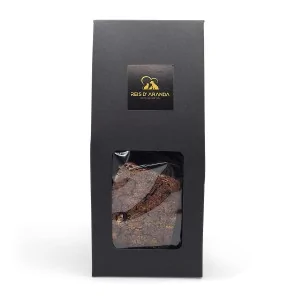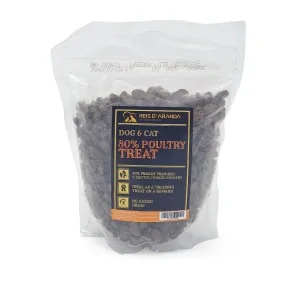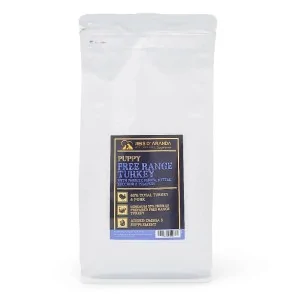Its name says it all: the Vienna blue rabbit comes from Austria. Not only is it beautiful with its shiny blue-grey...
THE DANISH AND SWEDISH FARM DOG
INTRODUCTION
The Danish and Swedish farm dog is a breed that perfectly combines calmness and liveliness. That said, their high activity levels must be satisfied in order to have a nice, quiet time on the couch.
THE ORIGIN OF THE DANISH AND SWEDISH FARM DOG
The Danish and Swedish Farm Dog is a breed of dog originating from Denmark and Sweden, whose origins can be traced back to farm dogs and mouse hunters in rural areas. These dogs played a crucial role in farm protection and rodent pest control. Eventually, it established itself as a recognised breed and in 1987 it was officially recognised by the FCI. The Danish and Swedish Farm Dog, also known as the Dansk-Svensk Gårdshund, has a history rooted in its role as a farm dog in Denmark and Sweden. Its courageous and alert temperament is a reflection of its former role in farm protection and pest control. Although their history is centred on their agricultural work, today they are also valued as companion dogs due to their affectionate and sociable nature.
STANDARD OF THE DANISH AND SWEDISH FARM DOG
GENERAL APPEARANCE: Small, compact, slightly rectangular dog. Known to be slow to mature.
IMPORTANT PROPORTIONS: The body should be slightly rectangular 9:10. Ratio of depth of chest to length of limbs should be 1:2.
HEAD: The head should be triangular in shape and relatively small in proportion to the body.
CRANIAL REGION:
SKULL: Rather broad and slightly rounded.
STOP: Well defined.
FACIAL REGION:
TRUFA: The colour should be in accordance with the colour of the patches.
HOCIO: Well developed, tapering gradually towards the nose but without giving the impression of weakness. Slightly shorter than the skull. Nasal bridge straight.
JAWS / TEETH: Jaws strong, scissor bite with even and well developed incisors. Pincer bite tolerated.
CHEEKS: Pronounced without exaggeration.
EYES: Medium size, slightly rounded, not protruding or sunken. Attentive with gentle expression. Eyes dark in colour in dogs with black patches. Slightly lighter is permissible in dogs with yellow or liver brown patches.
EARS: Medium size, rose or button shaped, in both cases the fold should be just above the skull. In button ears the tip should fall close to the cheeks.
NECK: Of medium length, strong and slightly arched. No dewlap.
BODY: Compact, with good substance. Loin: Short, broad and slightly arched.
Croup: Slightly rounded.
CHEST: Long, deep and spacious with well sprung ribs. Well defined forechest.
BOTTOM LINE AND BELLY : Abdomen only slightly tucked up.
TAIL: Set on not too high. Naturally long or naturally short. The tail should be carried straight, with a slight curve or sickle-shaped.
LIMBS
FOREQUARTERS:
GENERAL APPEARANCE: The forelegs are straight and parallel.
The front is proportionately wider than the width of the ribcage.
SCAPULAS: Oblique.
HOMER: Oblique.
METACARPS: Strong and flexible.
HANDS: Small, oval and somewhat tight.
HIND LIMBS:
GENERAL APPEARANCE: Parallel and well muscled.
THIGH: Fairly broad.
KNEE: Well angulated.
TIBIO-TARSIAL JOINT: Well angulated.
FEET: Small, oval and somewhat tight.
GAIT / MOVEMENT: Parallel and free.
HAIR: Short and smooth. Rough on the body.
COLOUR: White dominating. Patches of different colours, sizes and combinations (black, tan, yellow, brown and all shades of bay) are permitted. Patches also on the head, with or without tan markings. Spotting permitted.
SIZE:
HEIGHT AT WITHERS:
- MALES: 34 - 37 cm
- FEMALES: 32 - 35 cm
TOLERANCE: +/- 2 cm
FAULTS: Any departure from the foregoing points should be considered a fault and the seriousness with which the fault should be regarded should be in exact proportion to its degree and its effect upon the health and welfare of the dog.
- General appearance elegant.
- Narrow forehead.
- Short legs.
- Lack of depth of chest.
- Short or flat ribcage.
- Drooping croup.
- Erect ears.
- Neck too long.
- Tail curled or carried flat on the topline.
- Head totally white.
DISQUALIFYING FAULTS:
- Aggressiveness or extreme shyness.
- Any dog showing clear signs of physical or behavioural abnormalities.
N.B.:
- Male dogs should have two apparently normal appearing testicles fully descended into the scrotum.
- Only functionally and clinically healthy dogs, with breed typical conformation, should be used for breeding.
THE HEALTH OF THE DANISH AND SWEDISH FARM DOG
The Danish and Swedish farm dog is generally a healthy breed with few health problems. However, they may suffer from the following diseases:
- HIP DYSPLASIA: Hip dysplasia is a multigenic and osteoarticular disease which can be hereditary and degenerative. Therefore, there may be different factors with which to try to predict whether the disease can be developed or not. It is necessary to bear in mind that, although it may be a hereditary disease, it does not always have to develop as it is possible that the dog does not transmit it to its descendants.
- PERTHES‘ DISEASE: Legg-Calvé-Perthes’ disease is a degenerative disease of the head and neck of the femur leading to its collapse and the secondary development of osteoarthritis, pain and lameness. It is a typical disease of toy and miniature breed dogs under one year of age.
- PRIMARY LENS LUXATION: Primary lens luxation (PLL) is a painful, inherited eye disorder in which the lens of the eye moves from its normal position, causing inflammation and glaucoma.
- HYPERURICOSURIA: A condition characterised by an excessive level of uric acid in the dog's urine, which can also cause painful kidney or bladder stones. This disease, which can occur in any breed of dog, is hereditary.
- MACROTHROMBOCYTHOPENIA: Mac rothrombocytopenia is a benign inherited disorder. It is characterised by thrombocytopenia with macrothrombocytes in 30% of cases and variable platelet aggregation in response to ADP, depending on platelet count. No correlation has been found between macrothrombocytopenia and age, sex, neutering, coat colour, weight or heart murmur. The disorder is detected by routine complete blood count. Affected dogs have normal clotting protein activity.
- LIPOFUSCINOSIS CROID NEURONAL CROID 8 (LNC8): Neuronal ceroid lipofuscinosis 8 (NCL8) is a rare neurodegenerative disease that has been identified in some breeds of dogs. This disease is caused by mutations in the CLN8 gene, which produces a protein involved in lipid transport and lysosomal function. Dogs affected by LCN8 usually show progressive neurological symptoms from an early age, between 14 and 18 months. Progressive loss of vision, lack of muscle coordination and an abnormally stiff gait often occur. Within months of onset, seizures occur and can be lethal and most affected dogs do not live more than two years.
- NEPHROTIC SYNDROME: Nephrotic syndrome occurs when the filtering cells of the kidney, called podocytes, located in the glomeruli of the kidney, are damaged by immune complexes in the blood or by dense deposits of hard protein, a build-up called amyloidosis.
Dogs with nephrotic syndrome suffer from proteinuira, a disorder in which too many proteins are lost, two of which are essential to the body, albumin and antithrombin III. Proteins that control the body's metabolic rate may also be lost.
Symptoms include swelling of the limbs, shortness of breath, purple or bluish skin colour, abdominal enlargement, retinal haemorrhage or detachment and swelling of the optic nerve due to high blood pressure.
THE PERSONALITY OF THE DANISH AND SWEDISH FARM DOG
The Danish and Swedish farm dog may not be very large, but he is not lacking in personality. It is an intelligent, alert and active breed that adapts easily to different situations. It is not the ideal breed for those looking for a couch companion. In fact, it is just the opposite; it requires a lot of activity and frequent stimulation (more on energy level). However, if his daily activity needs are met, he is a very affectionate dog when it is time for a break. He prefers to be close to his owner and, if possible, under the same blanket, as he loves warmth.
Given its origins as a guard dog, it does not hesitate to jump at the feet of strangers when they pass through its territory. But, as always, whether he barks a lot or not depends on how you train your dog. He is affable and popular with families because he is very good with children.
CONCLUSION
The Danish and Swedish Farm Dog is a small to medium sized breed of dog, originating from Denmark and Sweden. With their compact appearance and courageous temperament, they are versatile and friendly dogs. They are excellent workers on farms and loyal companions in the home.
Leave a comment
Log in to post comments
















